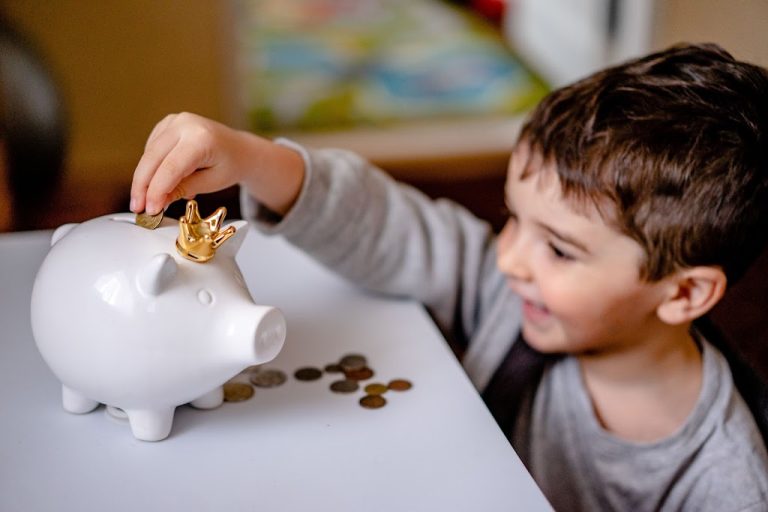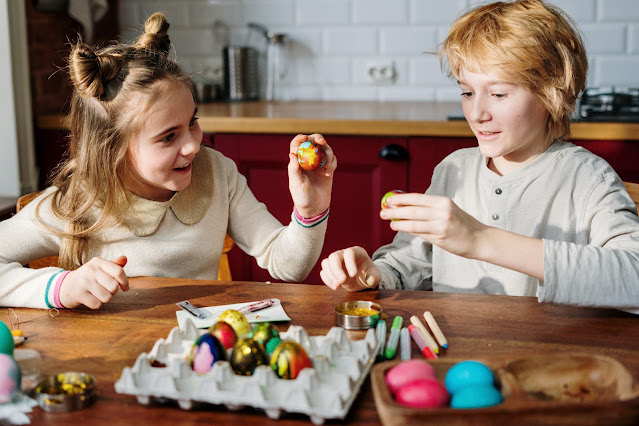10 Proven Ways to Managing Halloween with a Sensitive Kid
Halloween is a delight for kids and families, offering a magical blend of imagination and togetherness. Children revel in the chance to become their favorite characters and embark on a sweet-filled adventure through decorated neighborhoods. Families share in the excitement, from crafting costumes to spooky house decorations.
However, for families with sensitive children, the spooky atmosphere (and I would add too much sugar😅) can pose challenges. Striking a balance between festive fun and ensuring a comfortable environment becomes crucial. While some kids may embrace the thrill, others might find the eerie decorations or costumes overwhelming.
How Do You Deal With an Emotionally Sensitive Child?
Dealing with an emotionally sensitive child requires a thoughtful and empathetic approach that considers the child’s unique temperament. Emotional sensitivity in children can manifest in various ways, from heightened reactions to stimuli to a strong response to perceived stressors. It’s important to note that sensitivity can be a natural aspect of a child’s temperament, influenced by genetic and environmental factors. According to research in developmental psychology, some children may possess a heightened sensitivity to emotional cues due to genetic predispositions (Pluess & Belsky, 2010). To support an emotionally sensitive child, creating a safe and nurturing environment is paramount.
Open communication, active listening, and validating the child’s feelings help build trust and emotional resilience. Additionally, teaching coping mechanisms, such as deep breathing or mindfulness exercises, can empower the child to manage emotional responses effectively.
Let’s check those factors that can make Halloween overwhelming for sensitive kids, and learn about 10 proven ways to manage Halloween with them! 🎃
Creating a Sensitive-Friendly Halloween Experience
- Gentle Decorations: Opt for less intense or scary decorations to create a festive atmosphere without overwhelming sensitive children. Consider cheerful and playful Halloween themes that emphasize fun rather than fright.
- Costume Choices: Sensitive children may prefer simpler outfits that don’t cause discomfort or anxiety. Consider sensory-friendly costume options, such as those made from soft fabrics or without scratchy components. This can enhance the comfort level for sensitive children while still allowing them to participate in dressing up.
- Daytime Celebrations: Host daytime events or activities to avoid the spookiness that often accompanies nighttime Halloween festivities. This can create a more relaxed and less intimidating environment.
- Preparation and Communication: Brief sensitive children about what to expect during Halloween, including the possibility of encountering spooky decorations or costumes. Open communication helps alleviate anxiety by preparing them for the experience.
- Quiet Spaces: Designate quiet areas or safe zones at events where sensitive children can retreat if the festivities become overwhelming. Having a calm space allows them to take a break and regroup.
- Inclusive Games and Activities: Plan Halloween games and activities that are inclusive and not centered around scary elements. Pumpkin decorating, costume parades, or friendly scavenger hunts can be engaging without being overly intense.
- Candy Alternatives: Offer non-food treats as an alternative to traditional candies for children with dietary restrictions or sensitivities. This ensures that everyone can participate in the treat-giving aspect of Halloween.
- Community Collaboration: Coordinate with neighbors to create a supportive and understanding community environment. Encourage them to be mindful of the sensitivities of all children during Halloween celebrations.
- Parental Involvement: Facilitate parental involvement in organized events, ensuring that parents of sensitive children are aware of the planned activities and can provide support as needed.
- Virtual Celebrations: Recognize that some children, especially those who are highly sensitive, may prefer to celebrate Halloween in the comfort of their own homes. Organize virtual Halloween events, such as costume contests or storytelling sessions, to provide an alternative way for children to participate without facing the potential stress of in-person gatherings. This ensures that all children can enjoy the holiday in a manner that aligns with their comfort levels and preferences.
Creating a sensitive-friendly Halloween experience involves thoughtful planning, open communication, and a commitment to inclusivity, allowing all children to enjoy the festivities in a way that suits their individual needs and comfort levels.
Preparing a Sensitive Kid for Halloween
Preparing a sensitive child for Halloween involves a thoughtful and supportive approach to ensure a positive and enjoyable experience.
- Start by engaging in open and age-appropriate conversations about the upcoming festivities, discussing potential elements that might be spooky or unsettling.
- Share details about the planned activities, costumes, and decorations, allowing the child to ask questions and express any concerns.
- Introduce the concept of Halloween gradually, perhaps by incorporating non-scary decorations at home or reading books that portray the holiday in a lighthearted manner.
- Collaborate with the child in choosing a costume that feels comfortable and safe, avoiding overly elaborate or frightening options.
- Establish a plan for breaks during Halloween events, empowering the child to take a pause if needed.
- Emphasize the fun and creative aspects of the holiday while reassuring them that their feelings are valid.
By fostering open communication and gradually exposing the child to the Halloween experience, parents can help build a sense of comfort and confidence, allowing sensitive kids to enjoy the festivities at their own pace.

Dealing with Halloween Challenges
Even with careful planning, and preparing your sensitive kid for Halloween in advance, some challenges still can occur during the various events. As a big fan of organization and preparation, I would still prefer to have a sort of “plan B” regarding the most common issues that could happen (I think these are factors that might make anyone feel uncomfortable after a while, not only sensitive children):
- Overstimulation: The heightened sensory environment during Halloween, with loud noises, bright lights, and spooky decorations, can be overwhelming for sensitive children, leading to stress and anxiety.
- Costume Discomfort: Sensitive kids might struggle with the feel or weight of costumes, especially those with intricate details or accessories. The discomfort can hinder their enjoyment of dressing up.
- Social Anxiety: Halloween often involves social interactions, such as trick-or-treating or attending parties. Sensitive children may find these situations stressful, leading to anxiety about interacting with unfamiliar people or navigating crowded spaces.
- Fear of Scary Elements: The spooky decorations, costumes, and haunted houses that are common during Halloween can trigger fear in sensitive children, causing distress and a desire to avoid such elements.
- Transition Difficulties: Sensitive kids may struggle with sudden transitions or changes in routine. The deviation from the usual daily activities during Halloween can be challenging for them.
- Peer Comparison: Children may compare themselves to their peers and feel inadequate if they don’t share the same level of enthusiasm or participation in Halloween activities.
Takeaway
Halloween with a sensitive kid can pose some extra challenges for families. But with some preparation and organization creating a sensitive-friendly Halloween experience is definitely possible! 👻








